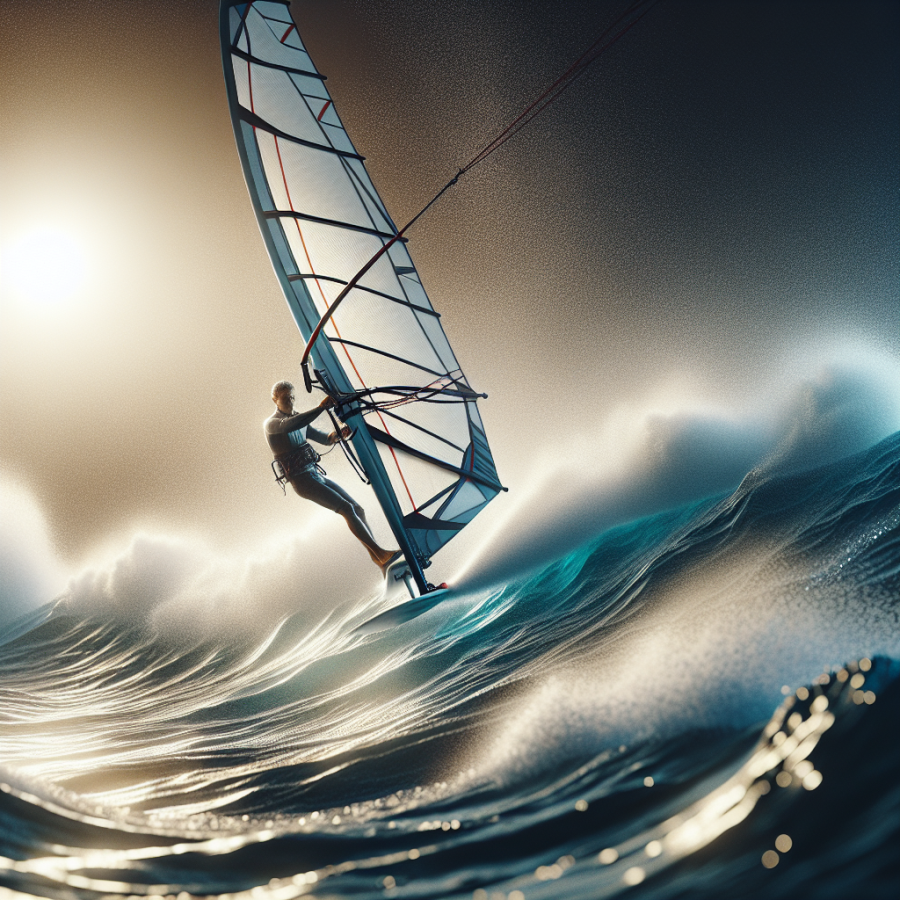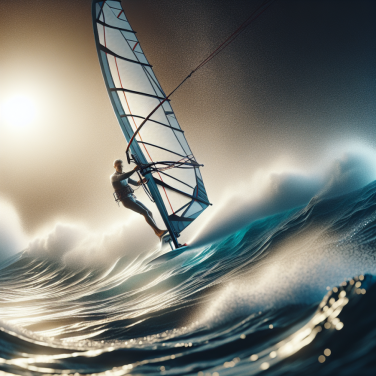Riding the Wind: The Exhilarating Experience of Wing Foiling on the Open Water
Wing foiling, a cutting-edge water sport that combines elements of surfing, windsurfing, and kitesurfing, has taken the ocean adventure community by storm. This thrilling activity harnesses the power of the wind through a handheld inflatable sail—much like a kite but without lines or rigging—to allow enthusiasts to glide across the water's surface with unparalleled grace and agility.
The inception of wing foiling owes its heritage to wind-powered sports, yet it carves out a unique niche with its distinctive equipment and riding style. The setup includes a hydrofoil—a wing-like structure attached to the bottom of a board— which lifts the rider above the water, reducing drag and enabling faster, smoother rides. As riders pump the wing in the wind, they feel as though they're literally riding the wind, a sensation that's both exhilarating and liberating.
One of the most captivating aspects of wing foiling is the combination of finesse and power required to navigate the open water. Seasoned wing foilers can sense subtle shifts in the breeze, adjusting their wing angles to catch even the gentlest of gusts, thus achieving remarkable speeds and making seemingly effortless transitions from tacks to jibes. For the less experienced, mastering these nuances is both a challenge and a reward, as each session brings new insights into the wind's behavior and how to leverage it effectively.
Another aspect that makes wing foiling stand out is its versatility. Whether on a calm lake or amid the rolling waves of the ocean, practitioners can enjoy the sport in a variety of water conditions. In flat water, the focus can rally on honing techniques, such as foot placement and wing control. In contrast, the open ocean challenges riders to combine their skills with wave riding, ratcheting up the intensity and thrill of the ride.
Equipment innovation is a continuous facet of the sport, with improvements in wing designs and hydrofoil technology contributing to an ever-evolving experience. Lightweight, yet robust wings that offer easy handling in a range of wind conditions, and advanced hydrofoils that provide stability and lift at lower speeds, are leading the charge into new frontiers of performance.
Environmental considerations also play a role in the sport's burgeoning popularity. Wing foiling is emission-free and relatively quiet, allowing riders to experience the natural world without noise pollution or carbon footprint concerns. This green aspect aligns with a growing consciousness about sustainable recreational activities.
As with any water sport, safety is a priority in wing foiling.
Read also:
Conquering the Clock: Success Strategies in Regularity Rallies
Mastering the Elements: An Introduction to the Sport of Wing Foiling
Wing foiling, a hybrid sport combining elements of windsurfing, kitesurfing, and stand-up paddleboarding (SUP), has seen a meteoric rise in popularity among water sports enthusiasts. At the core of wing foiling is the wing, a handheld sail that harnesses the power of the wind and propels the rider across the water on a hydrofoil board which lifts off the surface to give the sensation of flying.
As newcomers to the sport embark on their wing foiling journey, understanding the basics is crucial for a safe and enjoyable experience. Here, we break down the fundamental aspects of wing foiling to help beginners master the elements of this exhilarating sport.
**Equipment Basics**
The equipment for wing foiling consists primarily of the wing, the board, and the hydrofoil. The wing is a lightweight, inflatable sail with handles that the rider holds. It’s designed to catch the wind and can be manipulated to change direction and manage power. The hydrofoil board is similar in appearance to a SUP board but with the critical addition of a hydrofoil attached to the underside. This foil consists of a mast and wings that lift the board out of the water as speed increases, reducing drag and allowing for smoother sailing. Choosing the right size and type of equipment is essential and often depends on the rider’s weight, experience level, and wind conditions.
**Starting Out**
For beginners, it’s often advised to start in calm waters with consistent but moderate winds. Practicing basic handling of the wing on land can help build confidence before entering the water. Initial water training may not involve the hydrofoil board at all; rather, a larger, more stable SUP board might be used to learn how to balance and control the wing. Once comfort and control are achieved, transition to a hydrofoil board in shallow water allows for practicing take-offs.
**Safety Precautions**
Safety cannot be overstated in wing foiling. Beginners should always wear a personal flotation device and a helmet. Additionally, understanding weather conditions and wind patterns is crucial before going out on the water. Beginners should also be aware of their surroundings, including other water users and potential hazards like shallow reefs and strong currents.
**Technique and Maneuvers**
The key to successful wing foiling is mastering the balance between the lift provided by the wing and the stability of the board. Learning to position the wing correctly for optimal wind capture, as well as how to shift one's weight on the board, are foundational skills.




